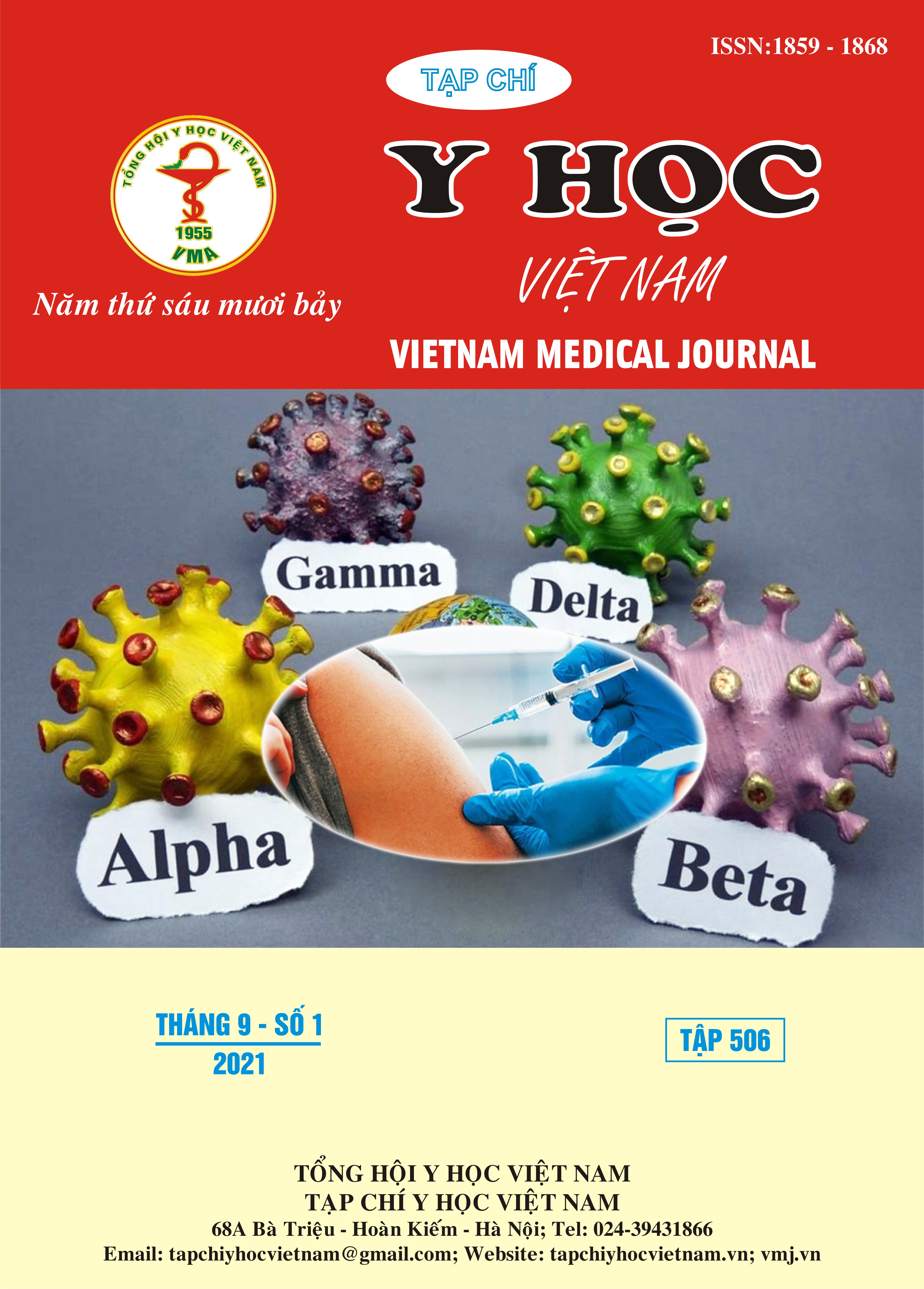ASSESSMENT OF THE RESULTS OF RECOVERY MOTOR FUNCTION UPPER LIMB IN PATIENTS WITH HEMIPLEGIA DUE TO ISCHEMIC STROKE BY ROBOT GLOVES GLOREHA
Main Article Content
Abstract
Objective: To evaluate the results of upper extremity motor rehabilitation in patients with hemiplegia due to ischemic stroke using Gloreha Robotic Gloves at the National Hospital of Sanatorium and Rehabilitation in 2020 - 2021. Subjects and methods: Clinical intervention study on 32 patients with hemiplegia due to ischemic stroke using Gloreha robotic glove program. Evaluation of the results of upper limb rehabilitation after 3 weeks and 6 weeks by Fulg Meyer Arm Test (FMA) upper limb function index and Hand Motor Scale (HMS). Results: Ischemic stroke in the elderly >60 age accounted for the highest rate (56.2%), there was no significant difference between the two groups of patients with and without sensory disturbances. The percentage of patients with good and very good mobility after 3 weeks and after 6 weeks increased significantly, the difference was statistically significant after 6 weeks (p<0.05). Conclusion: rehabilitation of hand motor function with robotic gloves has good results after 6 weeks of therapy.
Article Details
Keywords
Ischemic stroke, rehabilitation, robot gloves Gloreha
References
2. Veerbeek JM, Erwin EH. et al (2011), Early prediction of outcome of activities of daily living after stroke: a systematic review. Stroke, 42 (5), 1482-1488.
3. Fabio V, Palmira B (2016 ), Feasibility and efficacy of a robotic device for hand rehabilitation in hemiplegic stroke patients: A randomized pilot controlled study. Clinical Rehabil, 1-10.
4. Jakub Petioky, Krasova, Mikulenkova Petra (2016), Robotic glove with virtual biofeedback in spacicity management on acute and chronic patients with spastic hand paresis: impact on goal oriented functional therapy and routine mass therapy. 20th congress of physical and rehabilitation medicine, 454-458.
5. Lê Đức Hinh và CS (2008), Tai biến mạch máu não. Nhà xuất bản Y học, 29 - 47.
6. Trần Văn Chương (2010), Phục hồi chức năng bệnh nhân liệt nửa người do tai biến mạch máu não, Vật lý trị liệu - Phục hồi chức năng. Nhà xuất bản Y học Hà Nội, 574 - 603.
7. Borboni A, Mor M, Faglia R (2016), Gloreha - hand robotic rehabilitation : design, medical model and experiments. J Dyn Syst Meas control, 138.
8. Jorge H, Giovanni T, Silvia G (2015), Efficacy of short-term robot-assisted rehabilitation in patients with hand paralysis after stroke: A randomized clinical trial. AAHS, Hand, 1-8.


